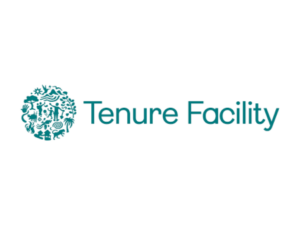
This group is helping Indigenous people secure rights for 50 million hectares of land
The Tenure Facility provides grants and technical assistance directly to Indigenous Peoples and local communities who are working for land
If Not Us Then Who supports environmental leadership from indigenous peoples and local communities to build networks and cultivate inclusive impact-driven storytelling. Their work aims to build lasting networks, target unjust policies, and advocate for greater rights for indigenous and local peoples to bring about positive social change.
Paul Redman of If Not Us Then Who spoke with Alec Saelens on January 18, 2024. Click here to read the full conversation with insights highlighted.
Alec Saelens: Please introduce yourself, and describe the problem that you are addressing and how you are responding to that problem.
Paul Redman: I’m Paul Redman, executive director and founder of If Not Us Then Who? I’m a documentary filmmaker by trade, but an event producer and impact producer as well.
The problem was the perception of Indigenous peoples at climate conferences & within decision-making spaces. They were seen as victims of climate catastrophe instead of heroes that mitigate against climate change.
Our job was to change perception. Starting in 2013, we’ve used participatory documentary, photography, and events to really build influence and networks of Indigenous communities at the policy level of climate change spaces.
A key part of that work is the need to diversify climate storytelling and climate voices, so a lot of what our work is now is empowering young Indigenous filmmakers & young Indigenous creators to tell their stories themselves. We’re handing over that storytelling mantle to those who can tell it best.
Alec Saelens: Could you go a little bit deeper in explaining who benefits from your work and how do they benefit from it?
Paul Redman: It’s rural communities that are living in and around natural resources: the Indigenous people & local communities. First and foremost, it’s the Indigenous leadership that builds networks & access to policy. Some short and long-term indicators would be Indigenous engagement in the UNFCCC [United Nations Framework Convention on Climate Change] formal networks and the allocation of direct finance to Indigenous communities.
Also, we have a career development program with close to 100 Indigenous creatives. We don’t just give them a kit on storytelling and hope for the best. We take them on a journey; it’s about really helping them meet people, build their networks, and develop their craft so that they can plug into industry support, NGO support, and political movements.
Alec Saelens: What makes your approach distinctive compared to other organizations that also support Indigenous leaders & young creatives that want to be part of the storytelling? What is specific to the work that you do with If Not Us Then Who?
Paul Redman: One is our positioning. We’ve been doing this work since 2013, so we have a lot of trusted relationships. We work extensively in the UNFCCC and other decision-making spaces. And so really, it’s access and networks.
I also think our centering around participatory documentaries and networks in the policy space really make us unique in this field. The climate decision-making we like to see is really a community practice with collective decision-making. At If Not Us Then Who there’s 50/50 Indigenous and non-Indigenous on the staff. We’re very people-centered, collective in our decision-making, and create long-term employment & support for Indigenous people.
Alec Saelens: Could you share a couple of pieces of work that you’ve done since 2013 that you feel reflects your approach to the work?
Paul Redman: Yeah, I can give two different examples.
Kynan Tegar, a young Dayak filmmaker who I met when he was nine. He’s from Sungai Utik, which is Kalimantan, Indonesia. I was filming there in 2013 at the start of this project, and he was so inspired by seeing us film in his community that he self-taught himself to make films. We heard about him doing this and have supported him on his professional development path: buying new equipment, buying him drones, etc.
He’s really come along in an amazing way. His films have won film festivals. His short films on the work of his community resulted in the land tenure officially being granted by the Indonesian government. He’s now at university studying anthropology.
Last year, he came to Los Angeles for our Indigenous Imaginarium where we had twenty-six Indigenous creators coming to Los Angeles ahead of the Oscars. As you can see, in all these steps, he’s growing and becoming more empowered in such a way that really creates a massive leverage for that community. Sungai Utik is now a poster child, if you like, for Indigenous collective land ownership. In some ways, Sungai Utik is also a poster child for our international advocacy work too.
When we started this work in 2013, there was not much interest for Indigenous people in climate spaces. Cut forward to Glasgow COP26, there was $1.7 billion pledged to Indigenous people and ,a few years prior to that, the UNFCCC set up a formal working group for Indigenous people and local communities.
That’s really a result of some of the collectivism that we’ve been a part of, facilitated by the Ford Foundation and other donors.
We do events at climate conferences which are talking shops for Indigenous peoples to meet NGOs and to meet donors. One of the key successes has been the Global Alliance of Territorial Communities. It has really shown the way in international campaigning.
We’ve helped to build massive influence & engagement with their work that’s increased their levels of funding. They have really significant budgets at the moment, millions of dollars to bring to communities at the local level.
We’ve also hosted a range of gatherings to support their growth: in Klamath, ahead of the San Francisco Global Climate Action Summit in 2018; and we’ve had projections in Times Square. All of this stuff not only brings individuals together, but also makes Indigenous peoples the people to talk to. Nowadays, we’re more of an introducer of Indigenous peoples to NGOs, to philanthropy, to decision makers.
Because we’ve had long years of ground truthing and connecting with amazing leaders, we’ve really seen them move from not being recognized to being very central to climate decision-making at all levels. Obviously things can be improved — finance could be better channeled, more strategic decision-making spaces could include Indigenous people at earlier stages — but I’ve certainly seen great change in engagement over the last ten years compared to when we started.
Alec Saelens: How do you measure success or the impact of your work? What is the evidence that you collect that speaks to the progress that you’re making? Do you have an impact framework? What are the key metrics that you look at?
Paul Redman: We have impact reports that we do on a yearly basis where we look at our mentorship, residency, and training programs to see what films were made & their distribution channels.
For example, we have a filmmaker, Peregrino, who we trained years ago. He made a short film. That short film was shown at Jackson Wild, and he was flown to Switzerland, then some press came out of that. Those are some of the metrics.
With each individual, you show their career path.
Another really good example is from Brazil. We supported on the We Are Guardians feature documentary, which has just been released on Netflix. Edivan Guajajara, the Indigenous co-director, cited in an interview with the American Indian Magazine of the Smithsonian that he was going to give up on filmmaking, but it was our program that encouraged him to keep going.
So essentially, the metrics are very much individual by individual, where we track everybody that we work with and we partner with.
The broader metrics are really around what’s changing at a policy level. We track new frameworks that come up in UN [United Nation] conferences and other climate conferences, and in the partnerships that we create. We also create a ‘Our Village’ space, which is a networking moment, and through that we track the sheer amount of different partners that are using and interacting in that space. Then, we track anything that comes out of those moments — more collective campaigning between NGOs and Indigenous peoples, etc.
We also track the five demands that we have published on our website. They were defined by the Indigenous groups that we work with as the on-the-ground metrics that we use. They are centered around reducing criminalization and murder of Indigenous people, free prior informed consent, land title, direct finance, and engaging ancestral wisdom in climate decision making. With that, we seek out campaigns that align with meeting those measures.
One key metric is the allocation of land title. If a piece of video content or a community we work with gets a land title, that’s a big win for us. In terms of our campaigning work, we always look at two sides of assessing impact. One is at the international policy level, the other is at a very local level with what’s happening in the community.
We’ve worked in the policy space for a long time; now, we’re exploring how to open up more general awareness specifically in the entertainment industry. Last year, we started the Indigenous Imaginarium, which is an event in LA to introduce Hollywood Industry to Indigenous creatives. You’re seeing a lot of our filmmakers and creators start to move in those circles so that’s another space we can judge access and metrics.
In many ways, the climate policy space is reaching a saturation for communication support. Many groups are advocating, but obviously there’s still a lot of issues. Extractivism, and many, many things that require further advocacy work, communication work. There’s a lot.
Alec Saelens: You talked about monitoring change on a policy level at the higher levels of international governance, notably with the United Nations. How do you know that a piece of content that you’ve produced has had an influence on those decision makers that are shaping new policies and rules? How do you assess that causation, if there is any? Or do you look for a correlation? What kinds of evidence speaks to your work having had an impact?
Paul Redman: It’s challenging. Our theory of change has been to show the right film to the right people at the right time. We curate screening sessions with decision-makers, which is easier than to track how the film is having an impact.
I think how a person comes to a decision and decides to move into that space is an emotional decision. Ultimately, we’re emotional beasts. So I think films — particularly short films & feature films — can really move people at an emotional level to then make decisions at the intellectual level. Every decision-maker has either a set of metrics that they use or just an emotional connection that they act on. That’s hard to measure on an individual basis.
An example of how we’ve tracked this is through our work with a film on Pluspetrol’s pollution of the Peruvian Amazon. We launched the film and targeted oil executives through LinkedIn. We could see that X number of executives watched or shared it. So, that at least shows us there are seeds of interest or influence in those spaces.
Anybody making decisions has a whole cocktail of things that influence it, but I’m a firm believer in stories being the thing that pushes people over the line because we’re more emotional beasts than intellectual beasts.
Alec Saelens: Totally. Ascertaining that direct causation between someone watching the film and them going on to shape policy is just too simplistic. It’s obviously a much more complicated process.
Thinking about impact; anticipating it even before a film is produced, edited and distributed, is vital. I appreciate how impact is really core to the outcomes considered.
Paul Redman: What also really excites me as a documentary filmmaker is the impact of producing it. All the films we make are participatory in the sense of when we talk to Indigenous leadership, we ask what they need most. It can range from land tenure to justice for murdered leaders.
Then, we craft a film to help viewers come to those conclusions, but they need a clear call to action. With every film you make, from feature to short, at the end you have to have, in my view, a message. Films are meant to get a message across; then, you construct the whole piece around that.
Seeing anything as objective or just purely observational was always a fallacy. When we make films, we’re intentional about communicating the change that we want to bring into the world. That’s what we teach as an organization.
Alec Saelens: Aside from funding, what are the challenges that you face in your work, in your area of the industry, and what are you doing to overcome them?
Paul Redman: There’s a load of challenges there, really. Security mitigation at every stage of the strategic communication work we do with Indigenous people is vital. They’re the ones taking the most risk. It’s a very real concern that we are always exploring and finding ways to be better at.
There’s also a need to diversify voices that we’re well set up to face. Part of that challenge is finding a bridge between the expectations of the international community on deliverables & professional conduct with the Indigenous peoples’ ways of doing things. We’re trying to create bridges that don’t dilute ancestral knowledge but still appeal to the industrial north, and vice versa. That’s a real challenge: to keep the purity of purpose & authentic voices in that space.
On a personal level, that’s more abstract, but something I’ve come to recently is… my job as a white male has been to diversify climate decision-making so there are less white males in the space. But I’ve come to a point ten years in and I’m like, “Okay, does my voice have purpose? Am I still relevant…?” So it’s really a personal challenge in realizing that even as a white male, my voice still counts, even after ten years of campaigning that we need less white males in space. Stepping up and having a voice and not feeling like I have to step into the background is a personal challenge in this work.
I spend a lot of time making these fantastic events where we build the community, we define what’s being spoken in the panel, and we’re like, “Okay, I should speak in this, but I’m not going to speak in this because we need to give the space over.”
But there comes a point when you do affirmative action for long enough that we’ve built a bridge for Indigenous peoples to be in this space. Now, it’s really about building the bridge where everybody feels that they can be in that space. It’s a diverse space, but that the liberal white male can speak and not feel ashamed or guilty of who they are in that space, which for me is central. I can go on for a long time about this because I grew up as a white South African. I grew up with guilt & shame when I found out what apartheid was about. So my work has really been at an emotional level to work through that. I feel like the final piece of that is being able to speak out without feeling like you’re an imposter.
Alec Saelens: Now taking the 30,000-foot view here, do you consider yourself to be working to advance systems-level change in your field? Could you say a little bit more about how you’re thinking about that systems-level change?
Paul Redman: Yeah. I mean, we’ve set out to create systems-level change in climate change decision-making spaces, and more recently, in the entertainment industry.
But I’ve always seen our work as being a bit more ethereal than that, if you like; it’s really been about changing what it is to be human. Understanding human consciousness and where we come from and what we are.
Over the course of this, you see the main schism is that people don’t see themselves as part of nature. They see themselves as being separate from nature. And so I feel like our work is to connect ourselves back to our natural selves & to see ourselves as part of a living environment, not separate.
That’s the reason I get up in the morning. Systemic change and getting things done in the UNFCCC is much needed. But I feel like there is work to be done in really connecting us with our natural selves; that is where Indigenous thinking is profound. To be Indigenous is to belong to a space, to be in a community, to care about that land, to think seven generations down the line.
All the stuff that’s been divorced in the industrial age. And so it’s really about bringing people back to that understanding of our shared humanity.
Alec Saelens: How do you achieve that? Humanizing people level in their understanding of their connection to the natural world?
Paul Redman: For me, we’re storytelling creatures. That’s how we define who we are and what we’re all about. I’m a South African born Englishman working in advocacy. We define ourselves with the stories we tell ourselves, about ourselves.
It’s about creating a culture of environmental heroism, built of & inspired by indigeneity.
It’s about mythmaking… which seems abstract, but mythmaking is the power of giving meaning to our lives. We do that by inspiring Indigenous youth to see that their elders are the future and that the world is interested in them — connecting them back to the land & nature, which filming can do.
They film their elders; they find new heroes in them. They spend time in the edit; they create the myth. They create within their communities a culture of environmental heroism. If you do that in every single Indigenous community, you then have an ecosystem of cultures that reinforce landscapes.
On the global level is where it gets really interesting. We ask, “Who are we as a species and how do we reinforce the environmental heroism that’s needed in the climate space to transition us to a better place?” That’s really around creating a new identity for ourselves.
My belief in what is needed for that comes from my own story which is about letting go of guilt and shame. We’re all culpable in the climate space. We’re all culpable of driving cars, flying in planes, eating the wrong food, eating meat. Whatever it is you feel guilty about, we all have it. We need to go beyond that and forgive ourselves. That stuff holds us back from being an effective agent of change. It’s the guilt and shame in me that stops me from speaking out. We all carry that.
I find the notion of forgiveness exciting. I think my next cycle of work will be around this idea of creating a Climate Truth and Reconciliation Commission where you can talk about forgiveness. We can hear stories of how fossil fuels are impacting Indigenous communities, and the CEO who was there at the time can hear these stories and ask for forgiveness. And an Indigenous person can give that forgiveness. And in that process, you create a vision for collective dreaming and collective work to solve the climate crisis.
At the moment, I think we’re obsessed with climate solutions and pay less attention to this emotional landscape. A Truth and Reconciliation space can address that. I’m inspired by what happened in South Africa where Mandela and Tutu televised the national Truth and Reconciliation Commision so people could understand the hurt and feel the forgiveness. Through video you can hear the tone, you can hear the passion, you can hear forgiveness. I connect visually to that space.
Through that, they created this idea of a rainbow notion that’s really helped keep South Africa together through the violence. We need that sort of process on a global scale, a global Climate Truth and Reconciliation Process that allows us to look at land back, doctrine of discovery, reparations, etc. but center it around forgiveness.
It links us to the human aspect of climate. It could allow people to let go of being a victim & let go of being the perpetrator, and just mitigate some of that tense emotion that’s around right now where we have a virulent left & a virulent right and nothing in between.
Alec Saelens: Going back to what you said about empowering young creative filmmakers in Indigenous communities to tell stories, could you say a little more on a practical level of what that requires? Is that replicable on a larger scale?
Paul Redman: Yeah, I think so. The crazy wildness about ecosystems is that everyone is unique, but there are commonalities that can be replicated like documenting in a thoughtful, emotive and participatory way. Then, do local screenings so people can see themselves on large screens.
It creates moments where people are celebrated. Then, if a film is really good, we put them in film festivals internally and maybe even the Oscars, etc.
It reinforces people’s sense of identities. We forget the power of video, the power of image, the power of media. I personally love video because of the audiovisual aspect of it. It really allows people to see themselves in a really amazing light, if done properly. Although, the reverse can also be true.
Especially on the local level, filmmaking’s goal is to empower. To get people to see themselves as seeds of change all over the place, but it’s not a one-size-fits-all. Even the word “Indigenous” is a multiplicity of different peoples. We need local filmmakers to honor those local needs. It’s in the micro screenings and discussions that creates a collective movement and collective advocacy towards the call to action of the film.
As you move to national and international spaces, you have to bring the people in the film with you along that journey. It’s not about you as a filmmaker showcasing your work; it’s about the leaders you’ve featured. We can’t just extract their stories and not give back. It’s always about looking at how we can make that cycle virtuous, sustainable and self-sustaining. It’s a trial and error of mitigating the extractive nature of storytelling.
Alec Saelens: What insights or teachable lessons can be taken from your work?
Paul Redman: It’s about being participatory. Whether you’re making a film or making campaigns, you need to involve the people who live in the ecosystems and spaces that you’re trying to improve or protect. You need to be as participatory as possibly at every stage of the work you do. It’s about empowerment. It’s about using your skills & abilities to make people feel good about themselves. That’s what environmentalism should be.
In the past, I’ve certainly been guilty of the negative stories — dead animals, caracasses, dead landscapes, ruins — the whole negative cycle of environmental reporting and journalism. Yes, talk about the negative aspects, but also talk about the people making a difference. Find the heroic narratives.
It’s through finding heroes that we are inspired to make a difference. We’re not really inspired by seeing how bad we are as a species although it’s evident. Our duty as communicators is to really dig into who are the heroes doing the work and making the change. Tell that story.
Alec Saelens: What is the place of the individual as a medium for storytelling versus telling the story about what they’re doing on a more structural level?
Paul Redman: Yeah, it’s certainly challenging. Our approach at the beginning was to try to find individuals doing the work and talk about the individuals, all the while, the Indigenous leaders emphasized that they’re a collective.
So it’s a tension that exists in how we see the world & how we do the work. We’re wired to understand & connect with the individual and struggle to understand the collective. It’s a challenge of balancing the tension between collectivism and individualism. It’s a super challenging question. I think it’s something to think about. I haven’t come up with a conclusion on that yet myself.
We are on a wave of consciousness and a part of a collective group of thinkers. Thinking collectively is really important so you don’t get carried away with ego. How to write stories about that is a whole set of tensions. I think it’s really about honoring that every new idea and every new initiative is built off of thousands of other amazing people who’ve tried to wrestle with the same thing and open the space for you to have this conversation.
Click here to read the full conversation with insights highlighted.
Alec Saelens is a former journalist who supports SJN and its partners track solutions journalism’s impact on society and the industry. In his former role, he researched and consulted on the connection between solutions journalism and revenue. He is co-founder of The Bristol Cable, the UK’s pioneering local media cooperative. Before SJN, he was a researcher and coach for the Membership Puzzle Project and an analyst for NewsGuard.
* This interview has been edited and condensed.
Find other organizations with insights on inclusive impact-driven storytelling.
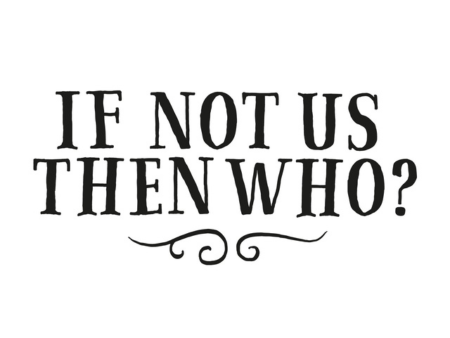

The Tenure Facility provides grants and technical assistance directly to Indigenous Peoples and local communities who are working for land
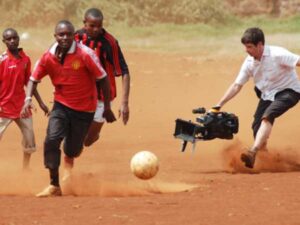
Voters tend to know a lot about presidential and local candidates but little about those in between. In Sierra Leon,
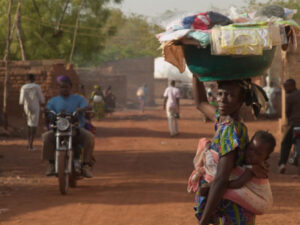
By the time sick kids reach a clinic, it can be too late. Through home visits, community health workers with
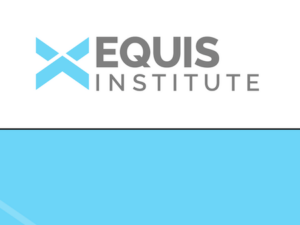
The Equis Institute provides grants and other support that invests in new and innovative ways to increase the civic participation
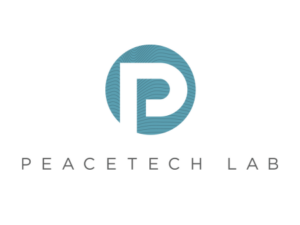
PeaceTech Lab uses the power of technology, media and data analysis to reduce conflict and/or prevent tensions from escalating in
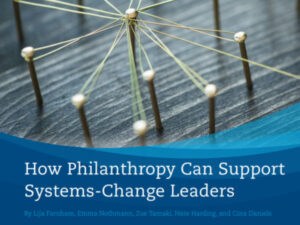
For the superrich and the biggest U.S. charitable foundations, donating to universities, hospitals and cultural institutions is the norm. Less